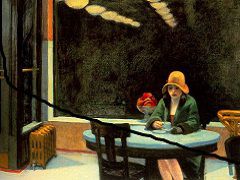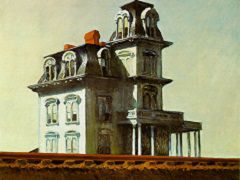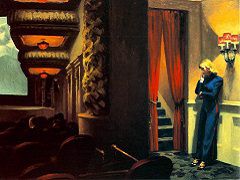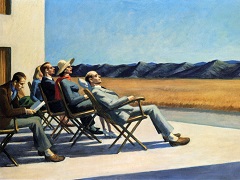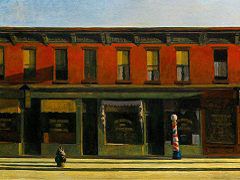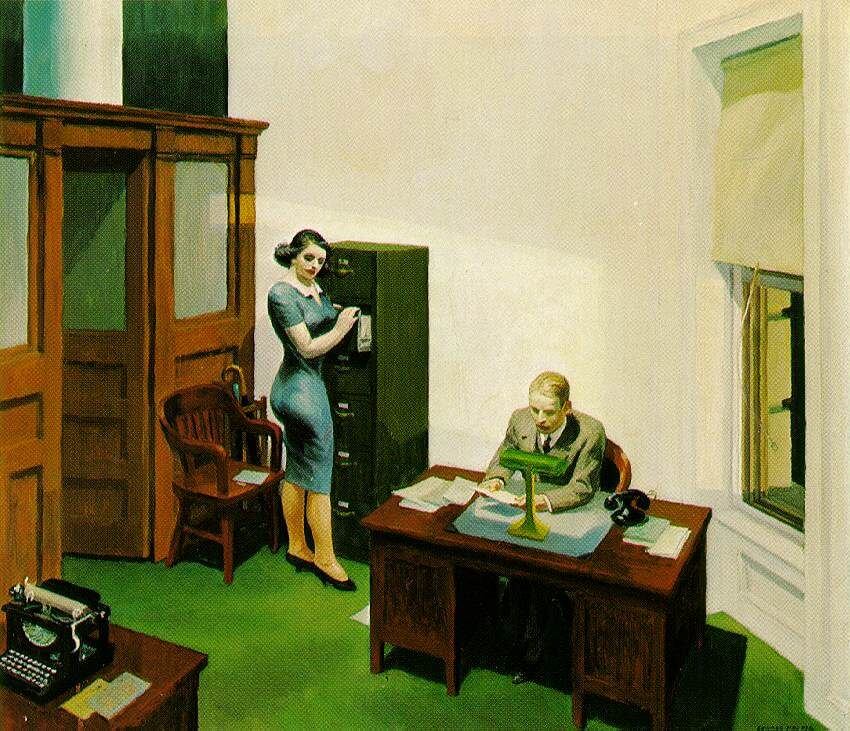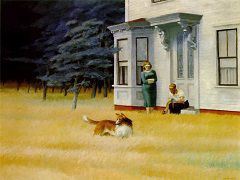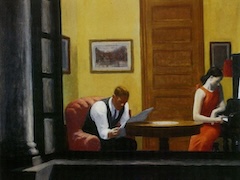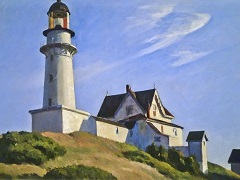Rooms for Tourists, 1945 by Edward Hopper

Rooms for Tourists, like most of Hopper's scenic paintings, displays the importance of light as a dramatic element. The mood in pictures depends on the special character of light at different times of day, the light also creating a common basis for architectural forms and natural phenomena. Architecture's geometric order and nature's more varied structure are brought together by the clearly delineated shadows, which, however, retain their transparency; the two spheres thus attain balance and harmony. It is obvious, however, that this balance can be achieved only by freeing the buildings from their human context.
The extreme conflict between nature and civilization is not found in all of Hopper's art, it does help to explain how he portrayed human subjects in his paintings. More important than this clearly defined contrast, however, is the suggestive mood of Hopper's landscape paintings. They all try to capture a subjective feeling that has no visual form of its own. Hopper's basic theme is the mediation between the internal and the external. This is seen in Rooms for Tourists, where we are unable to look inside the house, and where the horizon as motif points both to the visual forms of the world and to elements that transcend the world: we can perceive the evening light reflected in the objects but not the light itself or its source.


